Please click here to access the main AHDB website and other sectors.
- Home
- Knowledge library
- How to protect your container-grown nursery stock over winter
How to protect your container-grown nursery stock over winter
Alongside acclimatising your container-grown stock for winter, there are many other things you can do to keep them from harm and ensure they’re in good shape for the growing season ahead.
This information was last updated in 2005.
Back to the main page: winter protection of container grown nursery stock
Summary: key growing advice
Planning ahead
- Select new container sites carefully when planning new production units or expanding.
- Harness natural shelter and avoid very open, exposed sites.
- Choose a well-structured growing media with good drainage characteristics.
- Consider the inclusion of graded pine bark to help retain an open structure.
- Where protected space is limited, prioritise container stock to over- winter inside and plan bed space well in advance.
- Ensure heating systems work and are in good condition.
- Propagation beds and liners are high value and particularly vulnerable
- Use adequate windbreaks and ensure these are kept in good condition to reduce desiccation and physical injury over winter.
- In open ground situations, consider using straw bales as an insulating barrier around container beds (see figure 1).
- Where appropriate, gap up container stock pot thick to provide added root protection and use fleece covers to protect from cold winds and frosts.
- During very cold snaps, use several layers of fleece for extra protection.
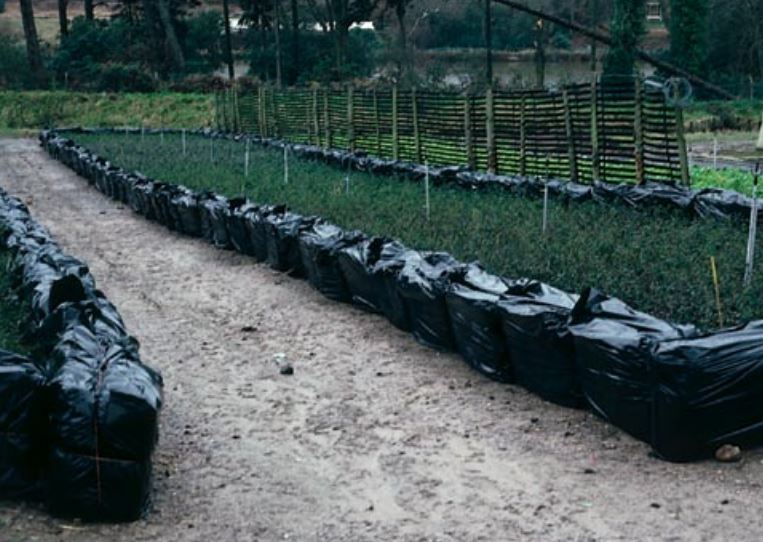 RSK ADAS
RSK ADAS
Figure 1. Straw bales in plastic provide useful additional winter protection.
Acclimatisation
- Ensure container stock enters the winter period properly acclimatised and in good condition with adequate nutrient reserves and good drainage.
- Avoid high nitrogen feeds for autumn potted material as these encourage soft growth.
- Avoid winter potting and hard pruning where this may predispose plants to frost damage, ie late flushes of soft growth.
- Avoid bringing outdoor container stock inside too early for the winter period otherwise, soft autumn growth more liable to winter injury will result.
Water management
- Excess water is the single biggest cause of winter losses in HNS.
- It is essential to moderate irrigation regimes as winter approaches and ensure good drainage conditions prevail.
- Ensure container beds are maintained in good condition and are well drained.
- Drained capillary sand-beds are ideal, especially for moisture-sensitive subjects and liners.
Staying vigilant
- Check local and national weather reports so that appropriate measures to protect container stock can be taken promptly.
- Be vigilant about disease attack and combine cultural control measures with a balanced approach to fungicide use.
- Pay particular attention to Botrytis.
- Ventilate polythene tunnels, glasshouses and thermal covers as conditions allow to control Botrytis and maintain winter hardiness.
- Fan ventilation should be considered in larger houses and multi-span structures (see figure 2).
- Maintain effective weed control to reduce competition for light, water and nutrients.
Structures
- If using glasshouses, set temperatures to between -1ºC and +5ºC.
- Supply additional heat (up to 5ºC) during very cold spells.
- Use fans to maintain air movement and avoid localised hot spots (see figure 2).
- Use double-skinned tunnels to provide protection, typically down to 5°C.
- They can also be useful for wind protection, but use fleeces or other materials for extra insulation.
- If possible, cover net tunnels with a polythene skin.
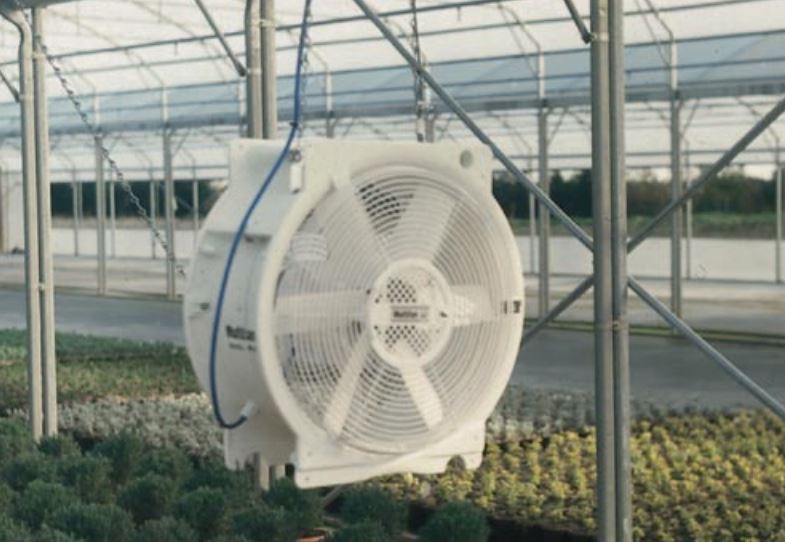 RSK ADAS
RSK ADAS
Figure 2. Fan ventilation is an effective way of providing good air movement to help combat Botrytis, particularly in larger structures.
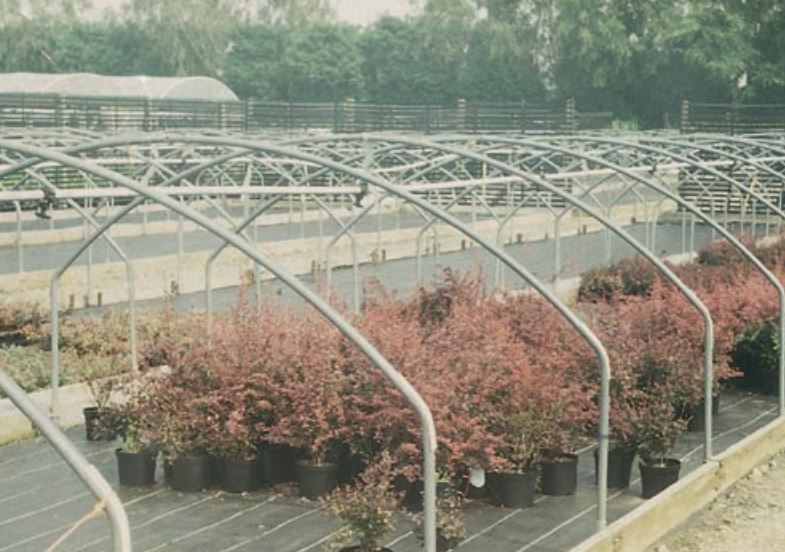 RSK ADAS
RSK ADAS
Figure 3. Low tunnel structures over outdoor beds make good use of space and can be temporarily covered in winter to offer, valuable, cost effective protection.
Nursery stock requiring winter protection
Some nursery stock subjects are known to be particularly susceptible to winter injury when grown in containers and so usually require over-wintering under the protection of fleece covers (outdoors), polythene or glass:
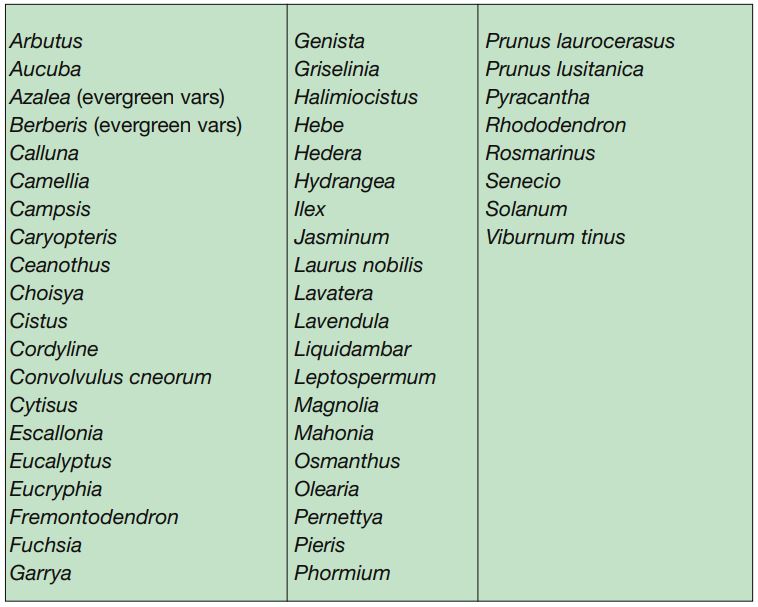 ADAS
ADAS
Protecting container stock against winter-injury
Site selection
When establishing new container units or expanding existing facilities, avoid exposed sites and frost pockets.
Ideally, choose well sheltered areas which have a degree of natural wind protection.
Well-drained sites and container beds are also important in reducing winter losses through waterlogged container stock (see figure 4).
Check the weather
Check local and national weather reports regularly so that appropriate measures can be taken promptly to protect container stock from adverse conditions such as severe frosts, strong winds and heavy rain.
Have fleece covers ready to provide immediate short term protection (see figure 5).
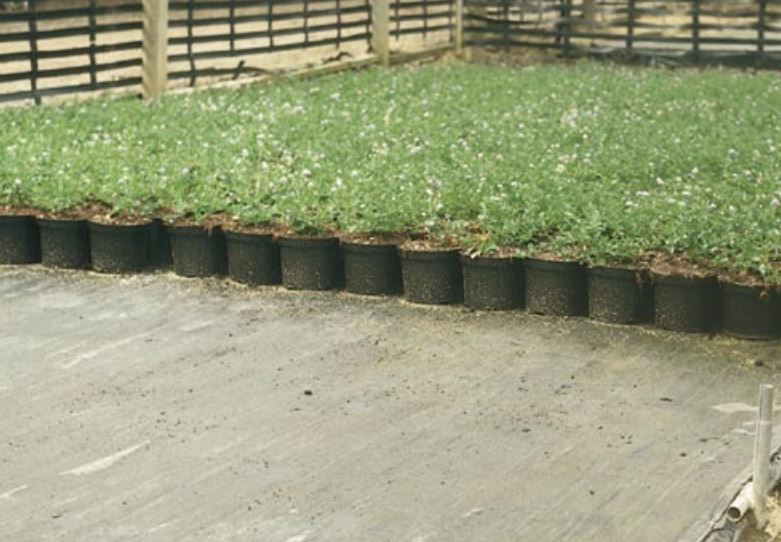 RSK ADAS
RSK ADAS
Figure 4. Sub-irrigated, drained sand beds provide ideal container beds for over wintering plants.
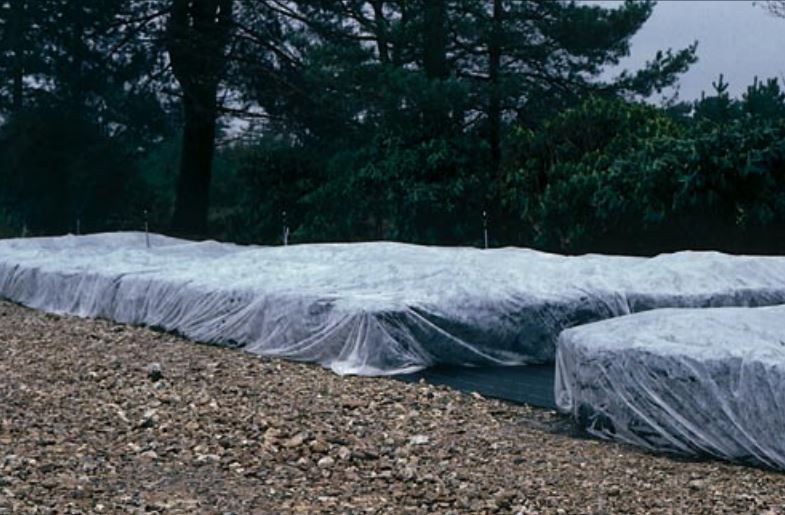 RSK ADAS
RSK ADAS
Figure 5. Fleece covers can provide a useful means of extra protection.
Think ahead
Ensure all protected structures are in good condition well before the winter period, eg tunnel cladding.
Make sure land drains and surface drainage channels are running freely.
Plan your potting
Plan potting schedules to ensure stock is adequately established for the winter period.
Where practical, schedule slow growing or sensitive subjects to be potted early to make maximum use of the growing season.
Ideally, autumn potted container stock should be housed under protection, otherwise use fleece covers to hasten root establishment.
Winter potting
Winter potting is best avoided unless plants are well established and can be adequately protected during sustained spells of very wet or cold weather.
Think carefully about location when allocating bed space at potting, ensuring stock requiring winter protection is set down in sheltered areas on well-drained beds which are either under protection or can easily be covered as necessary.
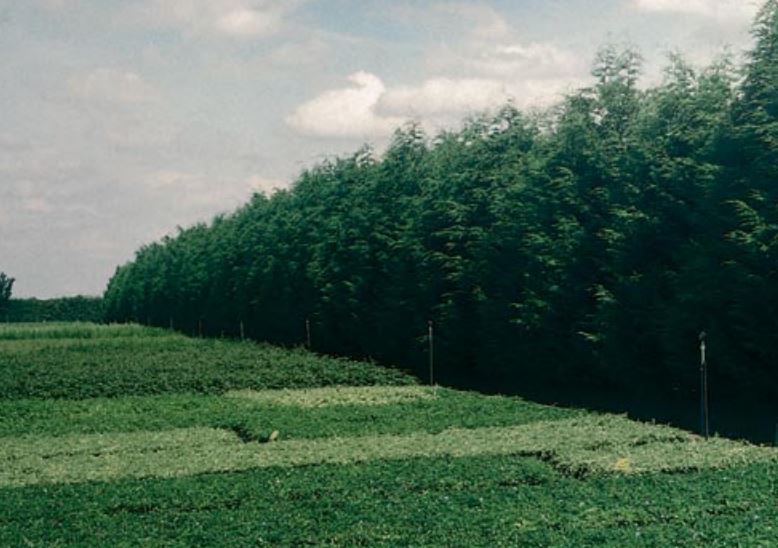 RSK ADAS
RSK ADAS
Figure 6. Living windbreaks for large areas can provide protection from winter conditions.
Windbreaks
Good windbreaks reduce wind speed, desiccation and blowing over of pots (figure 6).
They should be designed and installed as part of the nursery layout.
Use a combination of perimeter and internal windbreaks for maximum protection.
Natural, living windbreaks are usually cheaper than using artificial materials and though take longer to establish and provide shelter, are usually preferred for peripheral areas.
Internal windbreaks
Smaller, internal windbreaks provide additional shelter and are useful for breaking up the container unit into smaller, more manageable areas.
They do though need to be carefully sited so as not to cause obstructions with irrigation, spraying or handling operations.
Focus on drainage
Good drainage and well established root systems are the key to successful over-wintering of container stock.
Beds and surrounding drainage channels must be well drained; drained capillary sand-beds remove free water quickly and are ideal.
Growing media must also be well structured, not liable to slump and should combine moisture retention in summer with good drainage in winter.
Drained sandbeds allow more tolerance with the structure of the growing media; plants stood down on gravel or matting bases over winter require a more open structure with greater air capacity.
The inclusion of graded pine bark in the potting mix will help retain a more open structure and is ideal for over-wintered subjects needing good drainage.
The right nutrition
It is important that container stock entering the winter period is in good condition and has a balanced nutritional status with adequate nutrient reserves in the growing media.
Plants which are starved of nutrition are more susceptible to winter damage and disease entry.
High nitrogen feeds that encourage soft growth should cease during the autumn.
Similarly, the use of single season quick release controlled release fertilisers and quick start fertilisers should be moderated for autumn potted material.
Liquid feed nutrient ratios should be balanced and adjusted to supply adequate levels of potash to promote winter hardiness.
Water correctly
Excess water is the single biggest killer of hardy nursery stock particularly during the winter months and moderating irrigation levels during the autumn period as winter approaches is an essential part of the acclimatisation process.
Particular care is required with autumn potted container stock in order to promote rapid and strong root growth before winter.
Growing media must also be well structured and provide good drainage especially for container stock over-wintered outdoors on beds lacking positive drainage.
Irrigation programmes should be checked and adjusted as light levels, day-lengths and temperatures diminish.
Use coverings
Anti-transpirant products are not widely used in the UK although some growers in the eastern counties and near to exposed coastal districts favour their use with evergreen subjects and conifer varieties.
Horticultural fleece covers are usually preferred and work well providing they are well secured (see figure 5).
Several layers of such covers are sometimes used to form ‘thermal blankets’ over container plants for additional protection during very cold spells
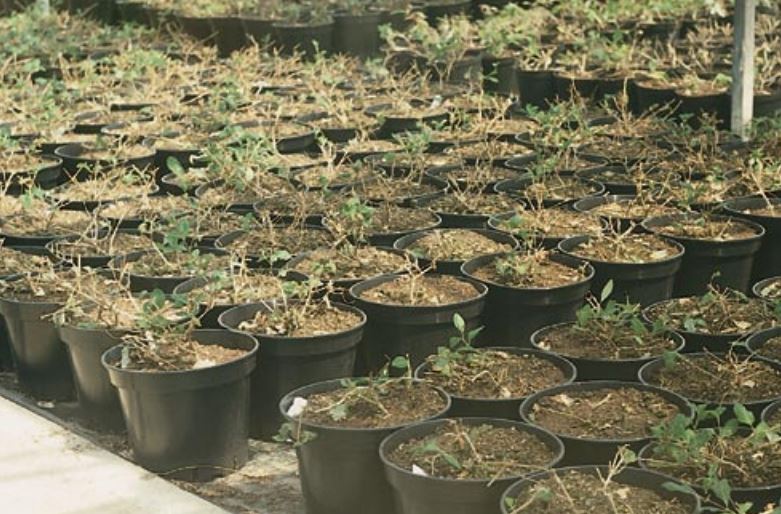 RSK ADAS
RSK ADAS
Figure 7. Gapping up container plants in winter can help insulate root systems against the cold.
Proper spacing
Setting down or ‘gapping up’ container stock pot thick is a quick and easy means of providing added root protection over winter (figure 7).
It has the effect of reducing the surface area of containers exposed to the cold and provides added insulation to minimise damage to root systems.
Similarly, double or even triple stacking of container stock where space is limited provides extra winter protection but should only be considered for established, durable plants with sturdy branch frameworks and usually under protection.
Such stock must also be regularly checked over the winter for Botrytis and promptly ‘de-stacked’ and spaced in spring, otherwise plants will quickly deteriorate.
Control weeds
Weed competition for light, moisture and nutrients is very damaging to a plants natural resistance to winter injury and so maintaining high levels of weed control during the growing season is important.
Topics:
Sectors:
Tags:

